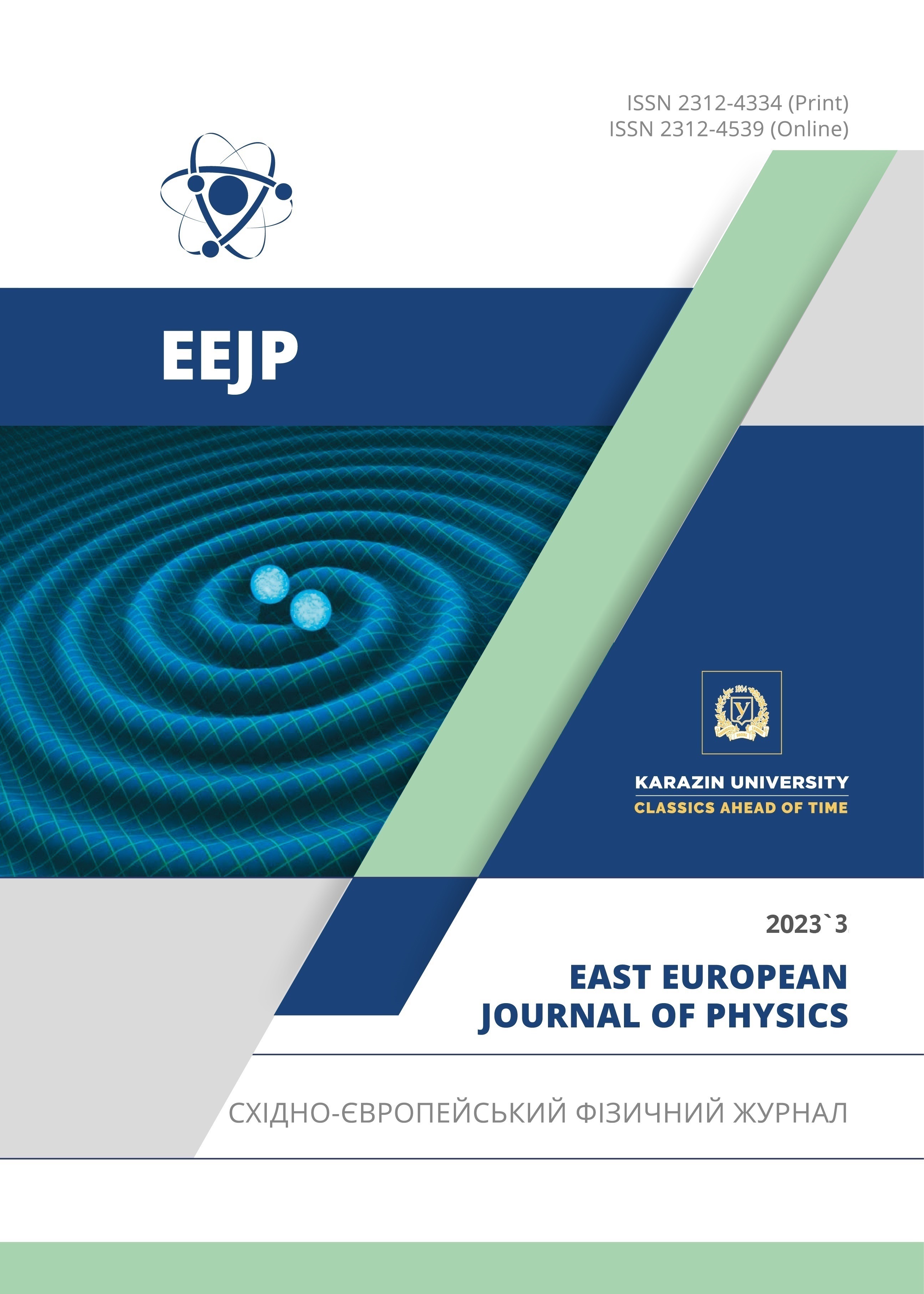Investigating the Impact of Varying Quantities of TiO2 Nanoparticles on the Anti-Corrosive Characteristics of TiO2-Epoxy Nanocomposite Coatings
Abstract
Prepared were pills coated with TiO2-epoxy nanocomposites, and their anti-corrosive properties were studied by examining the impact of varying amounts of TiO2 nanoparticles in the epoxy resin. The anti-corrosive characteristics of pills were investigated employing electrochemical impedance spectroscopy (EIS). Based on the EIS results, the sample containing 0.01 mg of TiO2 demonstrated the highest impedance value, indicating superior corrosion resistance and better anti-corrosion properties than the other samples. Also, this sample has the lowest corrosion current density among the all samples, with a value of 1.329E-07 mA/cm2, which shows that this sample has the best corrosion resistance and a slower rate of corrosion compared to the other samples.
Downloads
References
M. Czaban, “Aircraft corrosion - Review of corrosion processes and its effects in selected cases,” Fatigue Aircr. Struct. 10, 5-20 (2018). https://doi.org/10.2478/fas-2018-0001
H. Xu, and Y. Zhang, “A review on conducting polymers and nanopolymer composite coatings for steel corrosion protection,” Coatings, 9(12), 1-22 (2019). https://www.mdpi.com/2079-6412/9/12/807#
A. Shafaamri, R. Shafaghat, I.A.W. Ma, R. Kasi, and V. Balakrishnan, “Effects of TiO2 Nanoparticles on the Overall Performance and Corrosion Protection Ability of Neat Epoxy and PDMS Modified Epoxy Coating Systems,” Front. Mater. 6, 1–19. (2020). https://doi.org/10.3389/fmats.2019.00336
X. Zhao, S. Liu, and B.R. Hou, “A comparative study of neat epoxy coating and nano ZrO2/epoxy coating for corrosion protection on carbon steel,” Appl. Mech. Mater. 599-601, 3-6 (2014). https://doi.org/10.4028/www.scientific.net/AMM.599-601.3
F. Dolatzadeh, S. Moradian, and M.M. Jalili, “Influence of various surface treated silica nanoparticles on the electrochemical properties of SiO2/polyurethane nanocoatings,” Corros. Sci. 53, 4248-4257 (2011). https://doi.org/10.1016/j.corsci.2011.08.036
M. Heidarian, M. Shishesaz, S. Kassiriha, and M. Nematollahi, “Study on the effect of ultrasonication time on transport properties of polyurethane/organoclay nanocomposite coatings,” J. Coat. Technol. Res. 8, 265-274 (2011). http://dx.doi.org/10.1007/s11998-010-9297-7
S. Shen, and Y. Zuo, “The improved performance of Mg-rich epoxy primer on AZ91D magnesium alloy by addition of ZnO,” Corros. Sci. 87, 167-178 (2014). https://doi.org/10.1016/j.corsci.2014.06.020
E. Matin, M. Attar, and B. Ramezanzadeh, “Investigation of corrosion protection properties of an epoxy nanocomposite loaded with polysiloxane surface modified nanosilica particles on the steel substrate,” Prog. Org. Coat. 78, 395-403 (2015). http://dx.doi.org/10.1016%2Fj.porgcoat.2014.07.004
Mohamad Saidi, N., Shafaamri, A. S., Wonnie Ma, I. A., Kasi, R., Balakrishnan, V., and Subramaniam, R. “Development of anti-corrosion coatings using the disposable waste material,” Pigment Resin Technol. 47, 478-484 (2018). https://doi.org/10.1108/PRT-03-2018-0030
S. Zheng, D.A. Bellido-Aguilar, Y. Huang, X. Zeng, Q. Zhang, and Z. Chen, “Mechanically robust hydrophobic bio-based epoxy coatings for anti-corrosion application,” Surf. Coat. Technol. 363, 43-50 (2019). https://doi.org/10.1016/j.surfcoat.2019.02.020
S. Ammar, K. Ramesh, B. Vengadaesvaran, S. Ramesh, and A. Arof, “A novel coating material that uses nano-sized SiO2 particles to intensify hydrophobicity and corrosion protection properties,” Electrochim. Acta, 220, 417-426 (2016). https://doi.org/10.1016/j.electacta.2016.10.099
X. Shi, T.A. Nguyen, Z. Suo, Y. Liu, and R. Avci, “Effect of nanoparticles on the anticorrosion and mechanical properties of epoxy coating,” Surf. Coat. Technol. 204, 237-245 (2009). https://doi.org/10.1016/j.surfcoat.2009.06.048
M. Heidarian, M. Shishesaz, S. Kassiriha, and M. Nematollahi, “Characterization of structure and corrosion resistivity of polyurethane/organoclay nanocomposite coatings prepared through an ultrasonication assisted process,” Prog. Org. Coat. 68, 180 188 (2010). http://dx.doi.org/10.1016/j.porgcoat.2010.02.006
A.M. Atta, N.H. Mohamed, M. Rostom, H.A. Al-Lohedan, and M.M. Abdullah, “New hydrophobic silica nanoparticles capped with petroleum paraffin wax embedded in epoxy networks as multifunctional steel epoxy coatings,” Prog. Org. Coat. 128, 99 111 (2019). https://doi.org/10.1016/j.porgcoat.2018.12.018
J. Liqiang, S. Xiaojun, C. Weimin, X. Zili, D. Yaoguo, and F. Honggang, “The preparation and characterization of nanoparticle TiO2/Ti films and their photocatalytic activity,” J. Phys. Chem. Solids, 64, 615-623 (2003). https://doi.org/10.1016/S0022-3697(02)00362-1
G. Fu, P.S. Vary, and C.-T. Lin, “Anatase TiO2 nanocomposites for antimicrobial coatings,” J. Phys. Chem. B, 109, 8889-8898. (2005). https://doi.org/10.1021/jp0502196
P. Evans, and D. Sheel, “Photoactive and antibacterial TiO2 thin films on stainless steel,” Surf. Coat. Technol. 201, 9319-9324 (2007). https://doi.org/10.1016/j.surfcoat.2007.04.013
Copyright (c) 2023 Ahmed Ibrahim Dawood, Ahmed Qasim Abdullah

This work is licensed under a Creative Commons Attribution 4.0 International License.
Authors who publish with this journal agree to the following terms:
- Authors retain copyright and grant the journal right of first publication with the work simultaneously licensed under a Creative Commons Attribution License that allows others to share the work with an acknowledgment of the work's authorship and initial publication in this journal.
- Authors are able to enter into separate, additional contractual arrangements for the non-exclusive distribution of the journal's published version of the work (e.g., post it to an institutional repository or publish it in a book), with an acknowledgment of its initial publication in this journal.
- Authors are permitted and encouraged to post their work online (e.g., in institutional repositories or on their website) prior to and during the submission process, as it can lead to productive exchanges, as well as earlier and greater citation of published work (See The Effect of Open Access).








